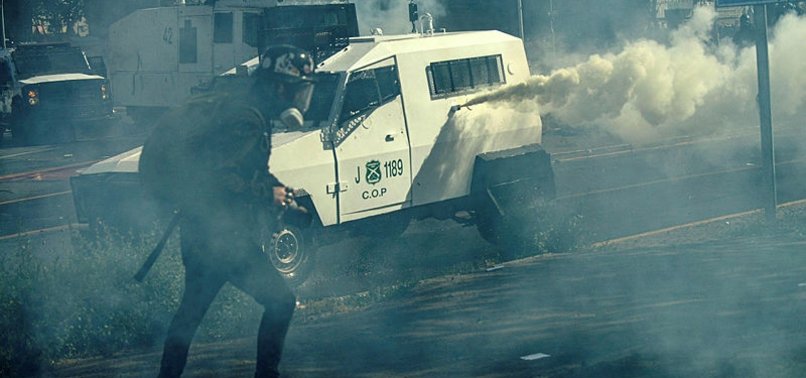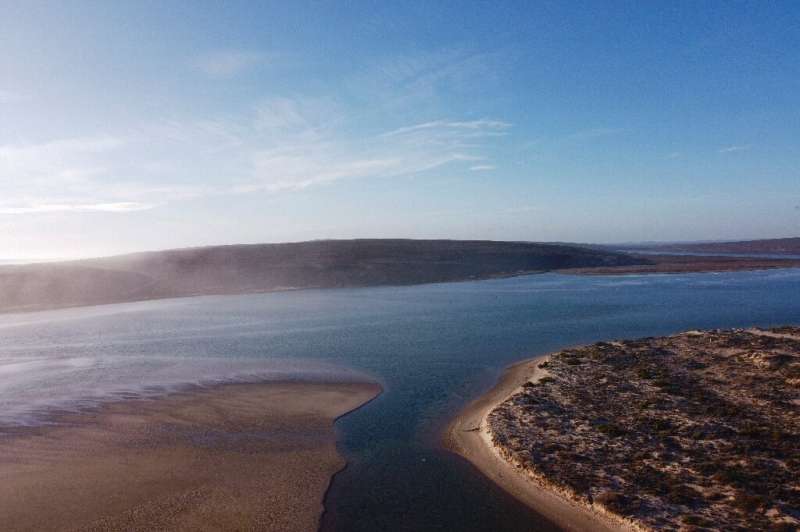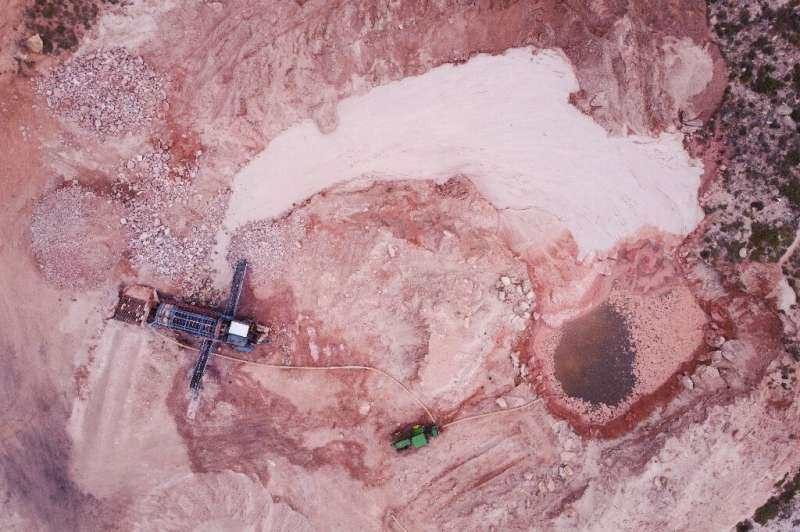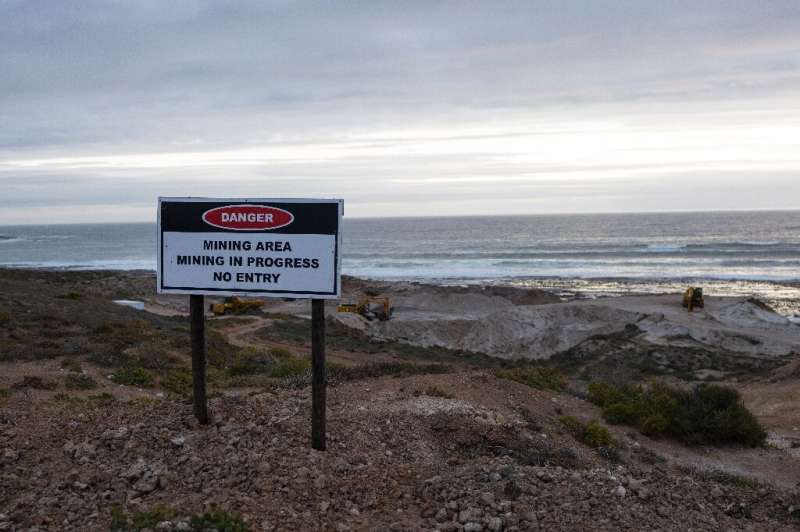Suriname and Guyana: Oil wealth or the environment
Suriname is one of only three carbon-negative countries in the world, and Guyana also claims carbon neutrality. But some fear this could change, with the recent discovery of rich offshore oil deposits in an area known as the Guyana-Suriname Basin Guyana.
Can Suriname Replicate Guyana’s Oil Boom?
Editor OilPrice.com
Thu, October 13, 2022 at 4:00 PM·6 min read
The offshore Guyana-Suriname Basin emerged in 2019 as one of the world’s most exciting drilling frontiers. While the U.S. Geological Survey estimated that the basin contained mean undiscovered oil resources of 15 billion barrels, disappointing exploration results saw international energy companies shun the geological formation. It wasn’t until 2015 when a consortium led by ExxonMobil made the world-class Liza oil discovery in the 6.6-million-acre Stabroek Block offshore Guyana. Since then, Exxon has made a swathe of high-quality oil discoveries, 33 since 2015, in the block, which is estimated to contain recoverable oil resources of at least 11 billion barrels. Those discoveries have been a boon for Guyana’s economy, which expanded by a whopping 43.5% in 2020, when the COVID-19 pandemic caused most economies to contract, and then by 19.9% in 2021. The former British colony’s oil-driven economic miracle is gaining momentum, with the IMF forecasting GDP growth of 57.8% for 2022. Neighboring Suriname, which saw its economy hit hard by the pandemic with GDP plunging 15.9% during 2020, is hungrily eyeing the oil wealth held in its territorial waters.
The Guyana-Suriname Basin is set to become one of the world’s most prolific offshore oil-producing regions, especially after it is considered that the USGS grossly underestimated the volume of crude oil contained in the basin. The combined total of the 11 billion barrels found in the Stabroek Block and the potential 6.5 billion barrels believed to be in Block 58 offshore Suriname is far greater than the USGS’s May 2001 estimate of 15 billion barrels of mean undiscovered oil resources held by the basin. The latest news concerning the ongoing exploration and appraisal of offshore Suriname point to it holding tremendous oil wealth like neighboring Guyana. A series of quality oil discoveries have already occurred in Block 58 offshore Suriname. U.S. international driller Apache, along with 50% partner French oil supermajor TotalEnergies, announced the first discovery in Block 58 in January 2020. The partners then announced a further four exploration discoveries with the latest occurring during February 2022.

Source: Apache Investor Update September 2022.
A recent disappointing development was the August 2022 announcement that the Dikkop exploration well drilled in Block 58 did not find the presence of hydrocarbons and was capped. Apache and TotalEnergies are currently working on an appraisal well in the Sapakara South oilfield and planning to drill an exploration well at the Awari prospect in the northern part of Block 58. In total, seven exploration wells were drilled to date in Block 58, with five identifying significant hydrocarbon reservoirs requiring further appraisal, while two were found to be dry.
In late 2020 U.S. investment bank Morgan Stanley stated that according to its modeling Block 58 contains at least 6.5 billion barrels of oil resources, with that number potentially higher if further discoveries are made. The recoverable oil resources held by Block 58, and hence Morgan Stanley’s estimate, will be quantified by the appraisal work being conducted in Block 58 by Apache and TotalEnergies. Both drillers have yet to make a final investment decision as to whether they will start to commercially exploit the block. It was widely anticipated that Apache and TotalEnergies would make an FID during 2022, but it has been delayed until mid-2023. According to the French supermajor’s chief executive Patrick Pouyanne, there are concerns over a conflict between what seismic data is showing in Block 58 compared to results from delineation wells.
While Apache lucked out with the Block 58 Dikkop exploration well, it was announced in August 2022 by the driller and its partners that they had made the first oil discovery in Block 53 offshore Suriname. Apache is the operator of Block 53, holding a 45% working interest, with the remaining 30% and 25% held by Malaysian national oil company Petronas and Spain’s CEPSA, respectively. The Baja-1 well was drilled to a depth of 17,356 feet, or 5,290 meters, where 112 feet equal or 34 meters of net oil pay was identified. Apache is negotiating with Suriname’s national oil company and industry regulator Staatsolie to obtain a one-year extension for the exploration period which under the production sharing contract can be extended for up to four years. After accounting for Petronas and Exxon’s December 2020 discovery with the Sloanea-1 well in Block 52 there have been seven potentially viable oil discoveries in offshore Suriname since the start of 2020.
The latest developments bode well for Suriname to experience an oil boom on a similar scale to that which is occurring in neighboring Guyana. Paramaribo is focused on attracting foreign capital to sustain the required drilling and development activity. Staatsolie recently revealed a proposal to invest $1.5 billion by 2026, with the lion’s share destined for the South American country’s offshore drilling program. The state-controlled energy company also disclosed plans to promote Suriname’s available offshore acreage, to attract foreign investment, while developing its capabilities to eventually become an operator. Staatsolie also intends to auction offshore Suriname deep-water blocks before the end of 2022 and hold another bid round for shallow-water blocks during 2023. Those plans come on the back of Staatsolie’s 2021 shallow water auction, which saw three blocks acquired by Chevron, TotalEnergies and Qatar Petroleum. Anglo-Dutch energy supermajor Shell inked a December 2021 deal that saw it acquire a 20% interest from Chevron in shallow water Block 5
While it was widely predicted that Suriname was on track to produce its first offshore oil during 2025, development delays with Block 58, mean that is more likely to occur during 2027. The volume of oil discoveries made in the Guyana-Suriname Basin, coupled with the generous PSAs established by Paramaribo, are key incentives for luring much-needed foreign capital to develop offshore Suriname’s considerable oil wealth. The efforts of Paramaribo and national oil company Staatsolie to attract additional investment for the development of Suriname’s considerable offshore oil wealth will bolster the pace of drilling. For those reasons, the first oil could occur sooner than 2027, and Suriname should undergo an epic boom like its neighbor Guyana. When production commences in offshore Suriname, it will be a boon for the deeply impoverished South American country’s ailing economy, which is forecast by the IMF to grow by a paltry 1.3% for 2022 compared to Guyana’s 57.8% and an average of 3.6% for South America.
By Matthew Smith for Oilprice.com
By Patrick FORT
10/16/22
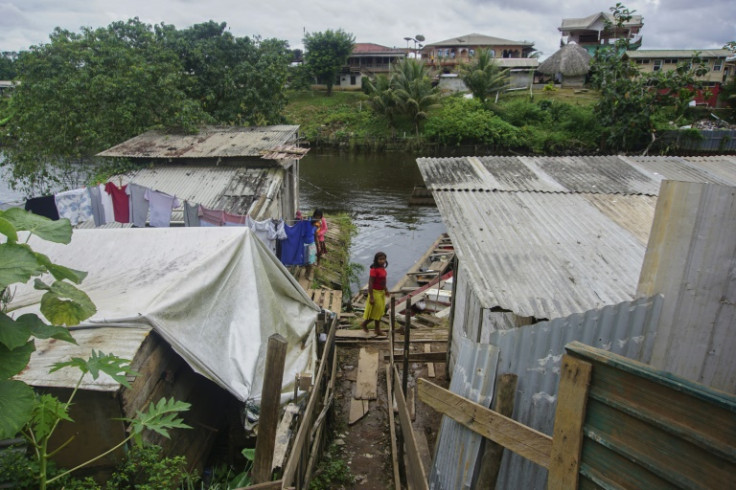 Leaders of Suriname and Guyana say newly-discovered oil reserves must be tapped to help better living conditions in their countries, among the poorest in South America
Leaders of Suriname and Guyana say newly-discovered oil reserves must be tapped to help better living conditions in their countries, among the poorest in South AmericaEmerging as potential oil powers while the world seeks to wean itself off planet-warming fossil fuels, poverty-stricken South American neighbors Guyana and Suriname say they have to cash in while they can.
The former Dutch colonies are among the world's most tree-covered countries, hosts to the so-called forest "lungs" that sequester massive amounts of planet-warming carbon dioxide.
Their economies and populations small, the countries have traditionally emitted little CO2 or other greenhouse gasses from fossil fuel use -- in fact Suriname is one of only three carbon-negative countries in the world and Guyana claims carbon neutrality.
But some fear this could change with the recent discovery of rich offshore oil deposits in an area known as the Guyana-Suriname Basin.
Guyana, a country of 800,000 people, was recently found to have proven reserves of at least 10 billion barrels of oil, likely much more according to experts
This makes it the country with the highest reserves per capita in the world -- which consumes 99.4 million barrels of oil per day.
Early assessments suggest the reserves of Suriname, a country of 600,000 people, may not be far behind.
"It will be hard to remain carbon neutral as a country (involved in the) petroleum sector," economist Steven Debipersad of the Anton de Kom University in Suriname's capital Paramaribo, told AFP.
The projected $10 billion Suriname stands to make in the next 10 to 20 years, will likely bring economic growth at the cost of the environment, he said.
The country's GDP today is about $3 billion.
Their presidents insist Guyana and Suriname cannot be expected to turn their backs on a chance to fill their countries' coffers and raise the quality of life for their people.
The countries are among the poorest in South America, with vast swathes of their populations living without electricity, clean water or access to adequate health services.
In a Paramaribo ghetto named Texas, dirty sewer water flows among dilapidated wooden homes.
Resident Edison Poekitie, a 23-year-old musician, scrapes by on no more than $50 a week. Does he go hungry?
"Every day!" he told AFP. "It's hard out here, really hard."
The community, he added, needs "water pipes, cables, new roads without potholes, schools, better houses, playgrounds..."
Poekitie said he hoped the government would spend the oil money "wisely," a sentiment echoed by 45-year-old food truck owner Brian Braithwaite in a poor neighborhood of the Guyanese capital Georgetown.
"Hopefully they do something so that... people (who) live on the street can do better," Braithwaite said.
Both presidents have vowed to make judicious use of their windfall petroleum profits, though some are worried that will undercut the sovereign wealth funds set up to guard some money for future generations.
"We are quite aware of the oil curse," Suriname President Chan Santokhi told AFP, alluding to neighbor Venezuela and other resource-rich countries such as Angola and Algeria that were unable to turn oil wealth into social and economic progress.
"We... should also get the opportunity to benefit from the production of oil and gas and its income" to address a biting economic crisis "and help our people to have better lives," he insisted.
For his part, Guyanese President Mohamed Irfaan Ali wants to use the oil income to "create wealth for now, and future generations."
Both speak of using the money to diversify their economies with investments in agriculture, tourism, housing, education and health care.
Eventually, "the oil and gas will be gone, but the food security should be guaranteed," said Santokhi.
Oil extraction and refining are major contributors to greenhouse gas emissions.
Though they have historically emitted little, Suriname and Guyana are both deeply affected by global warming -- in the crosshairs of worsening tropical storms and of flooding from rising sea levels.
Presidents Santokhi and Irfaan Ali believe they can maintain their countries' carbon balances by using oil money to protect their forests and invest in green energy.
Defending the forests that cover about 87 percent of Guyana and 93 percent of Suriname is also economically sage: both countries can sell so-called carbon credits to polluters who need to offset emissions.
For Guyana, carbon credits are worth about $190 million per year, said Irfaan Ali.
Monique Pool, director of the Green Heritage Fund of Suriname, is not convinced by the two-pronged approach.
"Carbon credit will give us more money faster than oil and gas and for longer because it will be sustainable," she told AFP.
In Georgetown, activist Christopher Ram agreed the oil should be left in the ground, expressing fear of exploitation by ruthless companies in the absence of "good governance."
Instead, "I would go to the international community and say: 'We are a small country, we've always been good to the environment, we want to stay that way... help us get the benefits we would have got with oil'."
But 53-year-old Cynthia Neel, who sent her daughter from Suriname to the Netherlands at the age of six for education and a chance at a better life, is hopeful of positive change.
"I hope that with the oil the children will no longer have to leave," she told AFP.
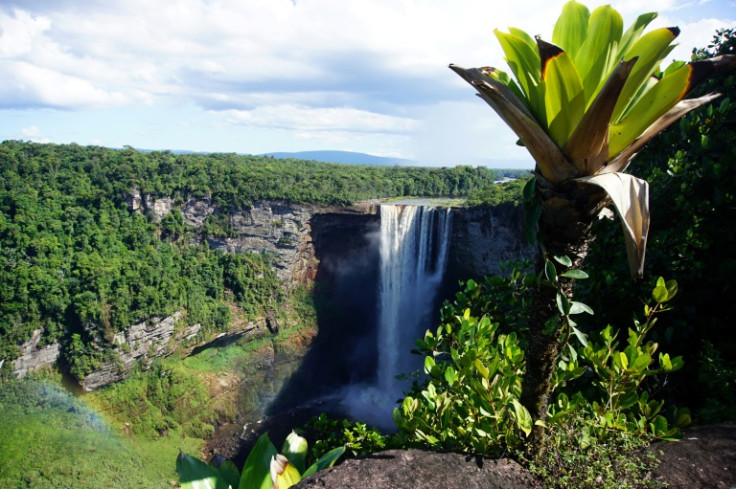


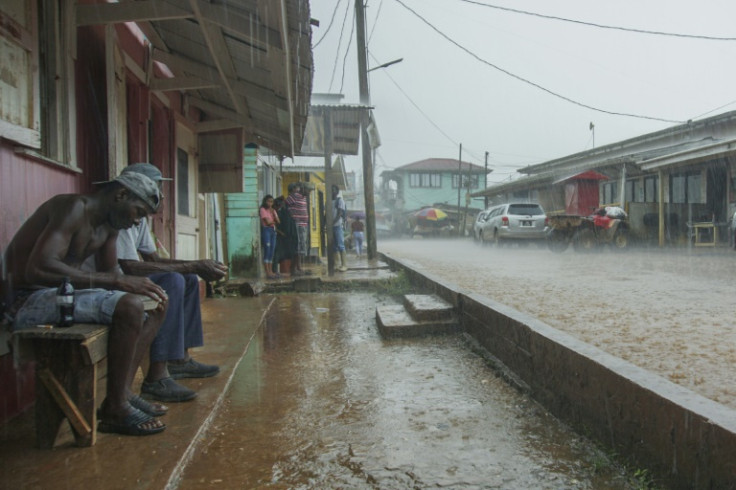
Ivelaw Lloyd Griffith | May 11, 2022
GLOBAL AMERICANS

Image: Waves batter a section of Guyana’s “Sea Wall” during a high-spring tide in 2019. Source: Loop News.
“Oil don’t ‘spoil!” So once declared Eric Williams, one-time long-standing Prime Minister of oil-rich Trinidad and Tobago. This assertion is undoubtedly true. But the distinguished scholar-statesman did not contemplate a circumstance where a dangerous mix of oil and water in the context of climate change dangers could spoil lives and livelihoods within the societies blessed with oil and gas resources. Such is the situation with the two nations in the Guyana-Suriname Basin (GSB). Technically, the GSB includes the coastal plains of French Guiana, Suriname, Guyana, and eastern Venezuela.[1] However, the focus here is on Guyana and Suriname, the Caribbean’s emerging petro-powers.
Mucho Petro-Power
The GSB is providing Guyana and Suriname with motherloads of black gold, making the two nations that are geographically South American but culturally Caribbean the world’s newest petro-powers-in-the-making, with Guyana having the power edge. (Unlike Guyana, Suriname also has had on-shore oil production, producing some 16,000 barrels annually; 1928 was its discovery year and production began in 1982 through a state-owned company called Staatsolie.) So far, the known oil reserves in the Basin total more than 16 billion barrels equivalent and the gas reserves exceed 30 trillion cubic feet. Indeed, since 2015 the oil discovery there alone amounts to 10 percent of the world’s conventional oil discovery. The quality of the oil also is noteworthy; it is light and sweet. Consequently, the refining process produces fewer emissions.[2] Guyana’s first offshore discovery was made in May 2015 by a three-company consortium comprising ExxonMobil, Hess Corporation, and China’s National Offshore Oil Corporation. For Suriname, offshore discovery day was January 7, 2020, with the companies involved being the American-owned Apache Corporation and the French-owned Total S.A.
Figure 1: Guyana and Suriname Oil Operations

Source: Oil and Gas Journal, February 1, 2022, available at CGX, Frontera JV make discovery offshore Guyana | Oil & Gas Journal (ogj.com)
Ever since those discoveries, Mother Nature has continued to bestow her bounty on these erstwhile poverty-stricken plural societies. Most recently, in January of this year, two Canadian partners, CGX Energy Inc. and Frontera Energy Corporation, announced a discovery at the Kawa-1 well in the Corentyne block in Guyana. Yet, as Figure 1 shows, the CGX-Frontera operation represents just a fraction of the flurry of prospecting, drilling, and other activities in the GSB. The following month, in February 2022, in Suriname, the French-owned company TotalEnergies, which operates in 130 countries around the world, announced the discovery of a significant oil and gas find at the Krabdagu-1 well in Block 58. Two months later, back in Guyana, on April 26, the ExxonMobil group announced three additional discoveries, at the Barreleye, Patwa in-1, and Lukanani-1 wells in the Stabroek Block. The three new finds bring the total number of discoveries to 36, with 31 in the Stabroek Block alone. Thus, GSB is abuzz with exploration and other activities, as Figures 1 and 2 illustrate.
Figure 2: Oil Exploration and Extraction in the Guyana-Suriname Basin
 Source: Norman Munroe, “Southern Caribbean Energy Matrix – Regional Push for Renewable Energy,” presentation at the FIU/LACC-CPC Webinar on High-Stakes Tension: The Southern Caribbean Energy Matrix and the Regional Push for Renewable Energy, March 4, 2021.
Source: Norman Munroe, “Southern Caribbean Energy Matrix – Regional Push for Renewable Energy,” presentation at the FIU/LACC-CPC Webinar on High-Stakes Tension: The Southern Caribbean Energy Matrix and the Regional Push for Renewable Energy, March 4, 2021.Consequently, Guyana and Suriname are beneficiaries of extraordinary wealth from Mother Nature’s oil bounty. For instance, in presenting the 2022 budget to Guyana’s National Assembly this past January, Finance Minister Ashni Singh projected an astonishing 47.5 percent growth of the economy in 2022. This would dwarf the growth performance of every country in the Americas; indeed, in the entire world. Incredibly, too, one writer estimates that Guyana stands to collect US$150 billion in oil and gas revenues over the ensuing three decades.[3] As a matter of fact, respected energy analyst Arthur Deakin is confident that “Per capita, Guyana will become the largest producer of oil in the world, passing the likes of the United Arab Emirates (UAE) and Kuwait. Oil revenues could approach US$30 billion dollars a year by 2030, roughly three times the size of both countries’ GDPs …combined.”[4] Understandably, Suriname’s growth and revenue earnings will be much less ample.
As might be expected, the enormous resource endowment of the two countries in the GSB catapults them into a new and powerful geopolitical league both within the Americas and globally. For one, they will command new respect in the hemisphere, providing they manage the resources well. And although Suriname has valuable strategic materials such as bauxite and gold, Guyana’s vast agricultural, gold, bauxite, and other strategic assets—and, yes, they have uranium, although it isn’t mined—will enable its leaders gradually to flex their leadership muscles within CARICOM and beyond. President Irfaan Ali’s lead in 2021 in CARICOM’s food security pursuits and the keen interest of regional leaders for Guyana to play a role in resolving the April 2022 imbroglio over the candidacy for the Secretary General of the Commonwealth are but two recent indications of this.
Yet, the colossal size of the production capacity within the GSB, particularly in the context of the vicissitudes of contemporary world politics with the surge in the price of oil and petrochemical products, among other things, because of Russia’s invasion of Ukraine, suggests that global-level geopolitical and geoeconomic impact is unavoidable. Georges Fauriol and Scott MacDonald are not just prescient in positing that “the rise of oil production in Guyana and Suriname is also important vis-a-vis any climb back to regional influence by Venezuela, which is benefiting from higher oil prices,” but also in contending that “although the Southern Caribbean is far from Ukraine, the region’s energy producers are on the frontline of a global geopolitical realignment. In the decade ahead, the Southern Caribbean is likely to play a much more prominent role on the global energy map, something local leaders will have to weigh carefully.”[5]
For all this, though, recalling the assertion by Eric Williams, there is good reason for apprehension that spoilage could occur because of geography and climate change realities; that water, truly, could spoil things.
Wet Neighborhoods
Guyana and Suriname are both in Wet Neighborhoods, and they share some physical and social geography features that conduce to environmental security threat conditions. I proposed the term “Wet Neighborhood” in a March 2020 report for the Center for Strategic and International Studies (CSIS) to describe Guyana’s tenuous geographic and environmental realities.[6] Suriname shares many of those realities.
Water is in Guyana’s DNA, so to speak. In fact, the word Guyana itself is an indigenous Indian term meaning “land of many waters.” The country has 965 miles of navigable rivers snaking through its 83,000 square miles. It also has some 270 waterfalls, many of which are breath-talking. Notable here is the Kaieteur Falls, the world’s largest single drop waterfall by the volume of water flowing over it. Part of the Kaieteur National Park in the country’s Amazon rainforest, is 226 meters high. In addition to the numerous rivers, waterfalls, ponds, and lakes, a contributor to Guyana’s Wet Neighborhood is the fact that 87 percent of the country is forested, according to the Rainforest Foundation US. Moreover, a significant portion of the forestation is part of the Amazon rainforest, which both generates significant rainfall and regulates it. The same is true for Suriname, except that the forest coverage there is higher: 93 percent, says the Food and Agricultural Office’s Global Forest Resources Assessment 2020. As a matter of fact, Suriname has the distinction of being the most forested nation in the world.[7]
The countries’ coastlines are major—and worrisome—aspects of their Wet Neighborhoods. Guyana’s runs 285 miles along the Atlantic Ocean and is six feet below sea level in some places. Guyana relies on a mix of measures to protect it from the ocean’s wrath. One is a coastal wall, called the Sea Wall locally, construction of which dates to 1855 during the time of British rule. Regrettably, maintenance of the Sea Wall has been inadequate over the years, with overflows from the Atlantic Ocean becoming a regular occurrence. Similarly, Suriname has an Atlantic coastline of a little over 217 miles and coastal defenses that also have suffered considerable neglect, resulting in overflows being common. Guyana also maintains a network of rivers and canals to channel water flow from the country’s interior to the Atlantic Ocean, along with a system of sluices designed by the Dutch when they colonized Guyana several centuries ago. Generally, the sluices are supposed to be closed at high tide, to prevent inundation, and opened at lower tide, to allow the outflow of water. Both countries also employ mangrove forests as part of their coastal protection. There, too, neglect over time has diminished the utility of this measure. Thankfully, government and civil society in both countries are in desperate restoration mode.
Guyana’s Wet Neighborhood realities aggravate the country’s environmental vulnerability, especially because the capital, Georgetown, lies along the coast. Moreover, about 80 percent of the country’s population of almost 800,000 individuals resides in coastal cities, towns, and villages. Likewise, Suriname’s capital, Paramaribo, also is situated along the coast, and a similar percentage of its populace of just over 596,000 souls lives along the coast. Understandably, then, Guyana and Suriname have had to cope with flooding for a considerable part of their modern history. Guyana’s most destructive flood over the last few decades occurred in January 2005, when the country suffered the highest recorded rainfall since 1888, affecting about 84 percent of the population and causing an estimated US$500 million worth of damages. The year 2008 also witnessed one of the most devastating floods in Suriname.
Both Guyana and Suriname experienced severe flooding in 2021. In Guyana’s case, the entire country was inundated, and seven of the 10 administrative regions were heavily impacted. Almost 30,000 households in at least 300 communities were displaced, food prices increased due to shortages, hundreds of farms were destroyed, and some 360 gold mining operations were affected. In May alone, for instance, the rainfall was recorded at 23.9 inches, the second highest deluge since 1981. Indeed, President Mohamed Irfaan Ali issued a disaster declaration and deemed the situation the worst natural disaster in the country’s history. In neighboring Suriname, eight of the country’s 10 districts were waterlogged, homes and farms also were destroyed, mining operations were disrupted, and at least 8,473 households were affected.[8] The flooding began in Suriname in March 2022, ahead of the high rainy season.
The Wet Neighborhood circumstances of the GSB countries also are affected by other climate change realities.[9] Take the issue of sea level rise. Although Guyana and Suriname serve as carbon sinks because of their rainforest coverage and low utilization of fossil fuels, global warming impacts their rainfall and therefore their flooding experiences. Climate change undoubtedly contributes to the rainfall described above. Regarding sea level rise, a study by the Union of Concerned Scientists (UCS) of the volume of water worldwide that could come from shrinking glaciers and ice sheets led them to project a sea-level rise of between 2.6 feet and 6.6 feet by 2100. The USC study indicated that “the Guyana coast is subsiding owing to groundwater extraction, soil compaction, and drainage of wetlands. From 1951 to 1979, sea level off Guyana rose at a rate some six times the global average, (0.4 inch, or 10.2 millimeters per year), around six times the twentieth-century average or three times the 1993 to 2009 annual average.”[10]
For various reasons, the situation has worsened since that study, to the point where in 2021 scientists at Climate Central, an independent group of climate experts, named Georgetown number eight in its list of nine cities around the world likely to be fully or mostly underwater by 2030 because of the effects of global warming. Guyana has the dubious distinction of being the only Caribbean or South American nation on that list. Figure 3 shows comparative images of the extent of global warming-driven floods on the city. (The other identified cities are Amsterdam, the Netherlands; Basra, Iraq; New Orleans, USA; Venice, Italy; Ho Chi Minh City, Vietnam; Kolkata, India; Bangkok, Thailand; and Savannah, USA.)[11] Needless to say, as Figure 4 indicates, coastal flooding of Guyana affects more than just its capital. The same is true of Suriname, as the March 2022 picture shown in Figure 5 shows.
In a lecture in Georgetown in October 2016, Cornell University economist Jay Mandle recalled the sobering portrait of the impact of massive flooding provided by the Caribbean Planning for Adaptation to Global Climate Change Project in a report released two years earlier: “… large scale disruption of population centres. Movement of people will be inevitable, as increasing inundation and floods will result in destabilization of infra-structure, including buildings, roads, bridges, dams. … floodwaters will remain stagnant for longer periods over land which will increase the possibility of the spread of disease. Agriculture will suffer irreversible damages because of salt-water intrusion and inundation. Coastal ecosystems will disappear.”[12] Clearly, water could spoil things!
The situation in Suriname is only slightly less troubling, although in its Nationally Determined Contribution 2020, submitted in December 2019 in fulfillment of obligations under the Paris Agreement on climate change, the government acknowledges that: “Suriname is particularly vulnerable to the impacts of climate change. The country’s small population, major economic activities, and infrastructure are concentrated along the low-lying coastal zone. It has already experienced extensive coastal erosion, and has suffered damages from heavy rainfall, flooding, higher temperatures during dry seasons, and high winds.”[13]
Figure 3: Flooded Georgetown due to Warming

Source: Climate Central, available at Climate Central – Sea Level Rise- Mapping Choices – Global.
Figure 4: Guyana’s Atlantic Coast Flooded

Source: Ed Cunningham, “9 cities that could be underwater by 2030, TimeOut, November 10, 2021, available at 9 Cities That Could Be Underwater By 2030 (timeout.com).
Figure 5: Flood in Suriname Interior

Source: Caribbean Loop News, March 14, 2022, available at Suriname experiences flooding in several inland villages | Loop Caribbean News (loopnews.com).
Environmental Security
Clearly, then, GSB countries face some clear and present dangers in the realm of environmental security. By environmental security, I mean circumstances where environmental-related/caused problems severely compromise the ability of state power holders to exercise normal political, economic, and military rule, which in turn, undermines the state’s internal governance or external sovereignty. The new wealth and the more than reasonable expectations of citizens within the GSB countries that they will benefit from it necessitate urgent attention to environmental security issues if the people there are truly to be beneficiaries of the new prosperity. Therefore, the leaders of the two nations are obliged not only to deliver public goods in the context of democratic rule where values such as honesty, transparency, and tolerance are practiced and not just preached, but to develop and maintain regulatory, judicial, and educational institutions that revolve around a fulcrum of proficiency and not partisanship.
Yes, the rising sea levels might only affect offshore drilling operations minimally. But the rising waters and other manifestations of climate change disrupt habitation and the normal conduct of political, economic, and social business within those societies, such that having the wealth could be of little consequence for the people there. Especially in Guyana, but also in Suriname, leaders face an existential imperative: to begin using some of the oil gains to craft what might be called an Environmental Security Investment Plan. Such a plan could have two components: a short-term one, and a long-term, transformational, one. Maintenance of the sea defenses, clearance, revetment, and maintenance of the canals and dikes, and repair/replacement and maintenance of water pumps would be key aspects of the first component. Restoration and maintenance of mangrove forests and the rehabilitation and maintenance of the coastal walls would be key aspects of the second component. Beyond this, the relocation of Georgetown and Paramaribo away from the doorsteps of the Atlantic is a political and financial hot potato that leaders can ill afford to ignore for too long.
Foreign assistance certainly would be necessary to help the two GSB countries address their extant environmental security challenges. Indeed, both Guyana and Suriname currently receive considerable flood mitigation and other climate change-related assistance—on both a bilateral and a multilateral basis. However, they cannot rely just on external assistance to strengthen their environmental security; they need to put some financial “skin in the game.” As regards Suriname, although offshore production there will not begin until 2025, the leaders there do not have the luxury of waiting until then to plan for the investment in their environmental security. Moreover, while Suriname has a Savings and Stability Fund for its earnings from mining, leaders recognize the need for a sovereign wealth fund to cater to their oil royalties.
The relocation of Georgetown has been contemplated since the 1970s, but has been stymied by issues of political will, societal intransigence, and financing. Jay Mandle’s comments on the matter bears noting: “There is much justified excitement concerning the country’s future as a petroleum exporter. But the need to use those funds to settle the Interior has not been the subject of public discussion. … Overcoming this reticence and debating the merits of Interior development is something that should begin soon. Without a society-wide dialogue on climate change, the opportunity to forge a consensus on how to use petroleum revenues in responding to coastal flooding will be lost. The risk of such a failure is that when circumstances do finally force the society to relocate, it will be unprepared to do so in an orderly and systematic way.”[14]
Financing would be the least of the problems for Guyana now, as it has been accumulating its oil fortunes in a sovereign wealth fund called the National Resources Fund. The National Assembly passed the Natural Resource Fund Act 2019 on January 3, 2019. It was later replaced with the Natural Resource Fund Act 2021, which secured National Assembly passage on December 29, 2021. Among other things, the Fund is intended to ensure that volatility in natural resource revenues does not lead to volatile public spending; guarantee that natural resource revenues do not lead to a loss of economic competitiveness; transfer natural resource wealth across generations to ensure that future generations benefit from natural resource wealth; and use the natural resource wealth to finance national development priorities, including any initiative aimed at realizing an inclusive green economy. As well, the law provides for governance by a Board of Directors. President Ali named Joseph Singh, the respected one-time chief of the country’s military, who also previously headed Conservation International Guyana and the Guyana Telephone and Telegraph Company, as Chairman on April 18, 2022.[15]
Initial deposits to the Fund, which is held by the Federal Reserve Bank in New York, were made in 2016 when the David Granger government received US$18 million from ExxonMobil as a signing bonus for the oil exploration contract. There was considerable controversy over the use of the Fund, especially when it was revealed in 2017 that US$15 million had been earmarked to finance the country’s legal defense before the International Court of Justice (ICJ) in relation to Venezuela’s claim over the Essequibo territory.
Then Foreign Minister Carl Greenidge reported to the National Assembly in December 2017 that there were occasions in 2016 and 2017 when the Ministry was unable to make timely payments to the legal team. He explained that “Faced by the existential importance of the ICJ case, … the MoFA advised that money be held separately and securely until such time as we were clear as to when it would be needed. Out of concern that adequate funds may not be available from the general budget — i.e. the Consolidated Fund — when it was time to pay for these critical services, the Minister of Foreign Affairs, advised the President that an arrangement be made to set aside sufficient funds to make the payment when needed. More specifically he asked that US$15 million of the sum received by the government from the ExxonMobil exercise be earmarked for this purpose.”[16]
Interestingly, and perhaps not unexpectedly, controversy over the Fund persisted. Most recently, less than two months after the passage of the December 2021 legislation, the National Assembly in February 2022 approved the first withdrawal—of US$607 million (G$126 billion)—from it. The government pledged to use the funds to fulfill election promises to build a large network of roads and bridges, open vast amounts of land for new communities, award 50,000 house lots to citizens, and construct bridges to improve connectivity within the country and with Brazil and Suriname to strengthen trade. The controversy revolved around the manner in which the government sought approval of the funds. Opposition legislators and journalists argued that not only did the government violate the section of the law that requires legislative approval before accessing the Fund, but they also did so before installing the Board of Directors and Investment Committee, which the legislation names as two key governance mechanisms.[17]
Nevertheless, the Fund is well endowed, as Figure 6 shows. According to the Fund’s report for the first quarter of 2022, during that period, inflows into the Fund amounted to G$23,355.33 million (US$112.02 million), comprised of a profit of G$20,000.99 million (US$95.93 million) and royalties of G$3,354.34 million (US$16.09 million). Since its inception, the Fund has received G$133,131.54 million (US$638.52 million) from 10 oil lifts and G$16,889.63 million (US$81.01 million) from royalties. Moreover, the report notes that in March 2022, the Federal Reserve increased the target range for the federal funds rate, enabling the Fund to earn G$31.57 million (US$151,412.05) in interest income over the quarter compared to G$13.72 million (US$65,823.49) during the previous quarter.[18]
Figure 6: Guyana Natural Resource Fund Bottom Line

Source: Bank of Guyana, Natural Resource Fund Quarterly Report January 1 – March 31, 2022, available at nrf-march2022-quarterly.pdf (bankofguyana.org.gy).
No matter how plentiful funds flow into Guyana’s Natural Resource Fund and whatever sovereign wealth fund Suriname creates, it would be imprudent for those GSB states to have those funds provide the only “skin in the game.” Green bonds, one form of climate financing, could provide complementary support, as part of a broad funding package. In his study on the subject for Global Americans, economist Scott MacDonald draws on the approach of the Climate Bonds Initiative, which describes green bonds as “…debt instruments used to finance projects, assets and activities that support climate change adaption and mitigation. They can be issued by governments, municipalities, banks, and corporates.”[19] Although Caribbean countries have faced herculean tasks in securing climate financing, in all likelihood Guyana and Suriname will find the funding journeys less difficult precisely because of their black gold collateral. Of course, economists will have to choose among the various kinds of green bonds.
Writing in his magisterial 2020 tome, The New Map: Energy, Climate, and the Clash of Nations, Daniel Yergin argues that “The main driver today is not energy security, as in past decades, but climate and the mobilization around it, particularly among young people.” While there might be credence to this proposition in relation to the world’s main geopolitical and geoeconomic movers and shakers, the reality is different for the GSB countries and Caribbean countries generally; both energy security and climate and climate change activism are drivers. This point is evident from the discussion above. Prime Minister Eric Williams surely was right in asserting that “oil don’t spoil.” Clearly, though, the vicissitudes of climate change, with their existential implications for the GSB countries, stand to spoil the prospects for the citizens of those nations even having societies in which they could enjoy the benefits of the Basin’s oil.
Energy in the GSB certainly stands to drive the economic and social upliftment of the people of the countries in incredible ways, especially if their leaders are able to avoid the Dutch Disease given their bauxite, gold, and other operations. Thankfully, the GSB countries have many experiences within and outside the Americas from which to benefit, as Inter-American Development Bank and other studies reveal.[20] However, GSB energy could be a driver of economic and social change in the wider Caribbean. But it also is imperative that the GSB countries be at the forefront of climate change activism. Their extant environmental security challenges necessitate this, all the more so because they find themselves on both the negative and positive sides of the climate change balance sheet, in that they provide carbon sinks but also produce fossil fuels that is shipped and refined elsewhere and add to global warming.
Ivelaw Lloyd Griffith, Fellow with Global Americans, and with the Caribbean Policy Consortium, is a long-standing expert on Caribbean affairs and recipient of the Dr. William J. Perry Award for Excellence in Security and Defense Education conferred by the National Defense University. The University of Illinois Press will publish his next book, Challenged Sovereignty in the Caribbean: Problems Without Passports. Appreciation is expressed to colleagues Scott MacDonald and Georges Fauriol for comments on the first draft.
Footnotes:
[1] Theo E. Wong and Lucia van Geuns, “The Discovery of a Major Hydrocarbon Occurrence in the Guiana Basin, Offshore Suriname: A Blessing or a Curse?” Academic Journal of Suriname, 11, 2020, available at View of The discovery of a major hydrocarbon occurrence in the Guiana Basin, offshore Suriname: a blessing or a curse? (adekusjournal.com).
[2] See Cool Thomas and Lumay Viloria, “Guyana-Suriname basin: Rise from obscurity to super potential,” World Oil Magazine, Vol 242 No. 5 (May) 2021, available at Guyana-Suriname basin: Rise from obscurity to super potential (worldoil.com); and Arthur Deakin, “Latin American Energy Sector 2022: The Good, the Bad, and the Ugly,” Americas Market Intelligence, March 7, 2022, available at 2022 Energy Market Outlook for Latin America (americasmi.com).
[3] See Lakhram Bhagirat, “47.5% growth projected for 2022,” Stabroek News, January 27, 2022, available at 47.5% growth projected for 2022 – Stabroek News, and Tulsi Dyal Singh,”I expect Guyana to earn around US$150B over the next thirty years in O&G revenues,” Stabroek News, April 23, 2022, available at I expect Guyana to earn around US$150B over the next thirty years in O&G revenues – Stabroek News.
[4] Deakin, “Latin American Energy Sector 2022: The Good, the Bad, and the Ugly.”
[5] Georges A. Fauriol and Scott B. MacDonald, “Geopolitical Realignments and the Southern Caribbean Energy Matrix,” Global Americans Special Report, April 21, 2022, available at Geopolitical Realignments and the Southern Caribbean Energy Matrix (theglobalamericans.org).
[6] See Ivelaw Lloyd Griffith, “Guyana: Elections and the Imperatives of Geopolitical Neighborhoods,” CSIS Report,
March 25, 2020, available at Guyana: Elections and the Imperatives of Geopolitical Neighborhoods | Center for Strategic and International Studies (csis.org).
[7] See FAO, Global Forest Resources Assessment 2020, available at Global Forest Resource Assessment 2020 (fao.org); and Republic of Suriname, Suriname National Adaptation Plan 2019-2029, 2019, available at Suriname Final NAP_apr 2020.pdf (unfccc.int).
[8] Ivelaw Lloyd Griffith, “Geopolitics of oil and water in Guyana: Part 2,” OilNOW, June 25, 2021, available at Geopolitics of oil and water in Guyana: Part 2 – Ivelaw Griffith | OilNow; and “Guyana, Suriname NDCs update CDEMA on flood impact,” Kaieteur News, June 14, 2021, available at Guyana, Suriname NDCs update CDEMA on flood impact – Kaieteur News (kaieteurnewsonline.com)
[9] Climate change refers to long-term shifts in temperatures and weather patterns. These shifts may be natural, such as through changes in the solar cycle, or, as has been the case since the 1800s, driven by human activities, notably burning fossil fuels such as coal, oil, and gas. The effects of climate change now include intense droughts, severe fires, rising sea levels, flooding, melting polar ice, catastrophic storms, and declining biodiversity. See What Is Climate Change? | United Nations
[10] Union of Concerned Scientists, “Climate Hot Map: Guyana,” 2011, available at Flooding of the Coastal Region, Guyana | Global Warming Effects (climatehotmap.org).
[11] Ed Cunningham, “9 cities that could be underwater by 2030, TimeOut, November 10, 2021, available at 9 Cities That Could Be Underwater By 2030 (timeout.com). For more on Climate Central, see What We Do | Climate Central.
[12] Jay R. Mandle, “Petroleum and Climate Change in Guyana’s Future,” Renaissance Papers, No. 1, 2019, available at 1.-UG-Press-Rennaissance-Lectures-Mandle.pdf (ugpress.com).
[13] Republic of Suriname, Nationally Determined Contribution 2020, available at Suriname Second NDC.pdf (unfccc.int).
[14] Mandle, ibid.
[15] See International Forum of Sovereign Wealth Funds, available at Natural Resource Fund | International Forum of Sovereign Wealth Funds (ifswf.org); and “Major General (r’td) Joe Singh to head Natural Resource Fund board,” Guyana Chronicle, April 21, 2022, available at Major General (r’td) Joe Singh to head Natural Resource Fund board – Guyana Chronicle.
[16] Hon. Carl Greenidge, “Statement to the National Assembly on Thursday December 14th, 2017, by the Hon. Vice President and Minister of Foreign Affairs, Mr. Carl B. Greenidge on the Exxon ‘signing bonus,’” available at Statement to the National Assembly on Thursday December 14th, 2017 by the Hon. Vice President and Minister of Foreign Affairs, Mr. Carl B. Greenidge on the Exxon “signing bonus” | Parliament of Guyana. Also, see “Guyana begins to cash in ExxonMobil signing bonus to cover legal fees at ICJ,” OilNOW, April 26, 2018, available at Guyana begins to cash in ExxonMobil signing bonus to cover legal fees at ICJ | OilNow.
[17] Davina Bagot, “After withdrawing $126B ‘illegally’ from oil fund … gov’t now tables motion seeking Parliamentary approval to cover tracks, Kaieteur News, February 7, 2022, available at After withdrawing $126B ‘illegally’ from oil fund – Kaieteur News (kaieteurnewsonline.com); and “First withdrawal from Guyana oil fund approved,” OilNOW, February 10, 2022, available at First withdrawal from Guyana oil fund approved | OilNow.
[18] Bank of Guyana, Natural Resource Fund Quarterly Report January 1 – March 31, 2022, available at nrf-march2022-quarterly.pdf (bankofguyana.org.gy), 8.
[19] Scott B. MacDonald, “Global Americans Working Group on Climate Change in the Caribbean: Climate Change Finance and the Caribbean,” Special Report, forthcoming. Climate financing itself refers to local, national, or international funding from public or private sources of finance to aid mitigation and adaptation measures related to climate change, says United Nations Climate Change. See Introduction to Climate Finance | UNFCCC.
[20] For example, see Mark Wenner, Elton Bollers, and Roger Hosein, “The Dutch Disease Phenomenon and Lessons for Guyana: Trinidad and Tobago’s Experience,” IDB Technical Note 1470, July 2018, available at The Dutch Disease Phenomenon and Lessons for Guyana: Trinidad and Tobago’s Experience | Publications (iadb.org). The term Dutch Disease was coined in 1977 by The Economist in relation to the experience of the Netherlands with their massive natural gas find. It describes a situation where the discovery of a natural resource triggers weaknesses in other sectors of the economy. For one, an increase in income from the natural resource exploitation could make domestic manufacturing and other products less competitive internationally. So, paradoxically, good news for one sector provides bad news for the economy overall.
Related PostsThe IMF’s turn on climate change
The International Monetary Fund (IMF) has recently pledged to put climate change at the heart…
Climate change at the UN
Few commitments were made during the UN's Climate Action Summit during the UNGA.
The Caribbean’s extreme vulnerability to climate change: A “life or death” matter
Climate change poses an uneven burden on the economy and future development of Small Island…



